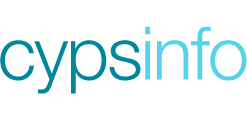The School Finance Manual is a comprehensive reference guide to the financial procedures for schools in North Yorkshire.
The School Standards and Framework Act 1998 (Section 48) requires the financial controls within which delegation works to be set out in an LMS Scheme for the financing of schools prepared by the Local Authority and approved by the Secretary of State for Education.
The LMS Scheme is the funding framework for schools. It sets out the financial relationship between the Local Authority and the maintained schools it funds. Within it are requirements relating to financial management and associated issues which are binding to both the Local Authority and the schools. The Scheme is updated to reflect Governmental advice. The North Yorkshire Scheme can be found in Chapter 2 of the School Finance Manual.
The LMS Procedure Rules form a part of this overall control framework. They aim to facilitate service delivery by setting out best practice for the administration of all financial matters within schools. This, then, ensures a high quality of financial information thereby enabling better decision making. They should not be viewed as a barrier to executive action and are constantly kept under review to ensure that they remain relevant to the day to day activities of schools.
The School Finance Manual contains both of the above documents as well as giving more detailed information in relation to particular areas such as budgets and forecasting, banking arrangements, VAT and charging for school activities. The manual is produced by North Yorkshire County Council for its schools. It is updated to reflect any changes of a local or national nature.
Other guidance and policies for schools are produced by the Local Authority outside of the LMS Scheme and LMS Procedure Rules. These are either reproduced within the Schools Finance Manual or are referred to with links as to where they may be found on the cypsinfo website.
Introduction - the school finance manual in context
Chapter 1 - List of Contacts (updated November 2021)
Chapter 2 (broken down into 3 parts - see below)
- 2.1 - LMS Scheme (updated March 2025)
- 2.2 - LMS Financial Procedure Rules (approved by CYPS Executive Members February 2022)
- 2.3 - LMS Procurement and Contract Procedure Rules (approved by CYPS Executive Members March 2025)
Chapter 3 - Revenue Budgets & Long Term Financial Forecasts (updated August 2021)
Chapter 4 - Capital Expenditure (updated July 2023)
Chapter 4 - Devolved Formula Capital - Guidance for Schools (April 2023)
Chapter 5 - Banking Arrangements (updated September 2021)
Chapter 6 - Purchasing (updated March 2025)
Chapter 7 - Ordering (updated April 2025)
Chapter 8 - Payment of Invoices (updated November 2022)
Chapter 9 - Construction Industry Scheme (updated September 2022)
Chapter 10 - Catering (updated November 2021)
Chapter 11 - Income (updated October 2021)
Chapter 12 - Hire of Educational Premises including Insurance
Chapter 13 - Private & Commercial Sponsorship (updated October 2022)
Chapter 14 - School Private Funds (updated June 2021)
Chapter 15 - Earmarked Funds (updated August 2021)
Chapter 16 - Value Added Tax (updated July 2025)
Chapter 17 - Governors (updated October 2021)
Chapter 18 - Bank Reconciliation (updated September 2021)
Chapter 19 - School Accounting (updated December 2021)
Chapter 20 - Payroll (updated August 2022)
Chapter 21 - Security (updated October 2021)
Chapter 22 - Audit Arrangements (updated October 2022)
Chapter 23 - Insurance Services to Schools (updated September 2021)
Chapter 24 - Charging for School Activities (updated August 2021)
Chapter 25 - Glossary of Terms (updated August 2021)


